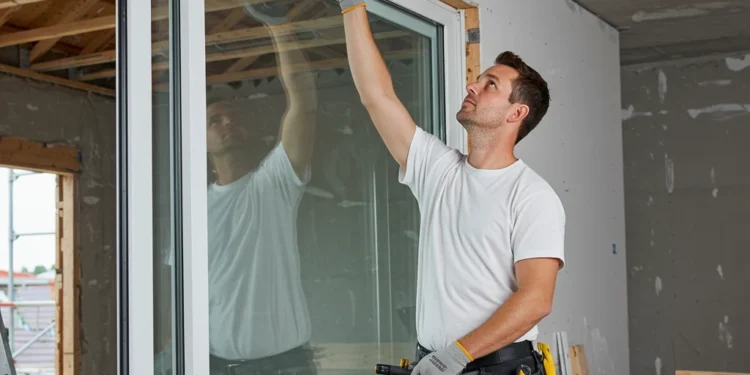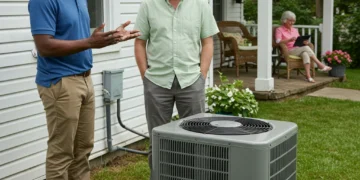Have you considered how your home’s layout can support a more active lifestyle? Design features that support movement—without sacrificing comfort—make staying energized throughout the day easier.
Simple changes like open floor plans, separate activity zones, and functional pathways can improve how you live and move. Prioritizing flow, accessibility, and purpose-driven spaces creates a home that supports physical activity while remaining warm and livable.
Designing for Everyday Movement and Flow
Creating a home that supports an active lifestyle isn’t just about layout—it’s also about the details that inspire daily movement. Visual elements reflecting your interests can keep motivation high and make your space more personal.
Make Walls Work for You
Decorating with athletic-themed items can turn any room into a space encouraging activity. Consider displaying eye-catching gear, framed jerseys, or hung equipment in areas where you exercise or walk through frequently. These choices add energy and intention to your design.
Show Your Passion Through Design
Adding custom-designed basketball pinnies to your walls blends function with personality. Whether framed, pinned, or hung by hooks, they offer a bold, sporty statement tied to your passion. It’s an easy update that inspires motion while keeping your environment accurate.
Energy-Saving Equipment Upgrades That Make a Difference
Choosing the right equipment for your home can significantly reduce energy use and improve overall comfort.
Upgrading to efficient systems and implementing proper insulation ensures your home stays comfortable year-round while helping to lower energy costs. Focus on practical, high-impact changes to get the most from your upgrades.
Key equipment upgrades for lower energy use:
- High-efficiency HVAC systems with programmable thermostats
- Double-paned windows and door weatherstripping
- LED lighting fixtures throughout your space
- Well-insulated walls and attic spaces
- Smart home automation for temperature control
These upgrades work together to optimize energy use while keeping your indoor environment consistent.
Built-In Zones That Maximize Every Corner

Designating specific areas in your home for different tasks makes daily routines more efficient and creates a more precise separation between work, rest, and play. Dedicated zones also make shifting your focus and energy easier, depending on your activity.
Small, intentional spaces can go a long way in supporting your lifestyle. Here are a few zone ideas to consider:
- A quiet homework area with good lighting and minimal distractions
- A compact home gym with essential equipment only
- A reading nook with a comfortable chair and proper lighting
- A hobby station for painting, crafting, or model building
- A meditation corner with calming decor and floor pillows
You don’t need an entire room to build an effective area. Even small corners can be reimagined into functional spaces. A reading nook could also serve as a morning coffee spot. A hobby table might transform into a card game space at night.
Every zone can be multi-use as long as it’s planned with intention. This thoughtful setup supports better boundaries and a more organized home.
Natural Light and Air Quality
Large windows and skylights do more than brighten a room—they enhance comfort and air circulation, creating a refreshing and energizing environment. Thoughtful window placement and proper ventilation can transform your space into one that feels open, calm, and functional for relaxation and activity.
The following ideas show how to use natural light and airflow to make rooms feel spacious and invigorating.
Here are the different ways to maximize light and airflow:
- Position windows to capture morning sun in bedrooms and workout spaces
- Use operable skylights to let out warm air and create a cooling breeze
- Add seating or reading areas near windows to encourage daily sun exposure
- Choose light-filtering blinds that reduce glare while allowing natural brightness
- Place air-cleaning plants near windows to improve air quality
Natural airflow and sunlight help reduce indoor pollutants and regulate temperature, making indoor spaces healthier and more energy efficient. Opening windows during mild weather supports airflow and lowers cooling costs.
Ceiling fans can improve air circulation and comfort without increasing energy use. With thoughtful window placement, these strategies enhance daily wellness and long-term energy savings.
Functional Storage Solutions for Active Homes
Thoughtfully designed storage can significantly improve how your home supports an active lifestyle.
When storage areas blend into your home’s layout, they keep gear and essentials accessible while reducing clutter. A well-organized space feels open and easy to live in, without compromising convenience.
Built-In Storage for Everyday Gear
Efficient storage features make it easier to store sports equipment, workout gear, and daily essentials where you need them most. Instead of overwhelming closets and messy corners, these innovative options are tailored to support activity and movement:
- Cabinets and shelving that integrate with the walls
- Under-stair drawers are ideal for bulky or seasonal gear
- Bench seating with hidden compartments for discreet storage
- Adjustable custom closet systems for flexible organization
- Pull-out solutions are designed for unused corner spaces
Storage That Keeps You Moving
Integrated storage solutions help you keep order and stay focused on your routines. With a place for everything, you won’t waste time searching for gear or clearing space.
Organized, accessible storage encourages more movement, whether you’re doing yoga, chasing kids around, or starting a new training regimen. Open floors and a well-thought-out layout make staying active and enjoying your space easier.
Sustainable Home Design

Choosing sustainable materials for your home no longer means sacrificing style. Modern eco-conscious finishes come in a wide range of designs to complement any aesthetic while reducing your environmental footprint. Thoughtfully selected elements not only elevate the look of your space but also support responsible living, especially when incorporated into thoughtfully planned home designs in Sydney.
The right solutions balance form and function to create energy-efficient, visually appealing interiors.
Design Choices That Deliver Practical Value
When building or renovating, certified energy-efficient solutions can enhance performance and comfort. For example, choosing an ENERGY STAR-certified home helps lower long-term energy bills while ensuring lasting value.
Coordinated planning is essential to balance sustainability and visual appeal, building spaces that function efficiently and look great.
- Use durable materials like bamboo flooring or recycled glass countertops for long-lasting surfaces
- Use low-VOC paints and finishes in timeless or trendy hues
- Choose energy-efficient windows with modern, stylish frames
- Add sustainable insulation that increases comfort without visible changes
- Opt for eco-friendly lighting fixtures that double as attractive design features
Materials That Work Harder for Your Home
Focus on multifunctional selections that meet everyday demands while remaining eco-conscious. Cork flooring, for instance, is both resilient and sustainable, perfect for active areas. Similarly, LED lighting enhances ambiance and cuts energy usage.
These upgrades help future-proof your home while achieving a polished, modern look that reflects thoughtful decision-making.
Design Meets Wellness
Creating a functional, active home isn’t just about open spaces and energy upgrades – it’s about crafting an environment that naturally encourages movement while maintaining comfort and efficiency.
Your home should be where staying active feels effortless, and every element works together to enhance your daily life.












